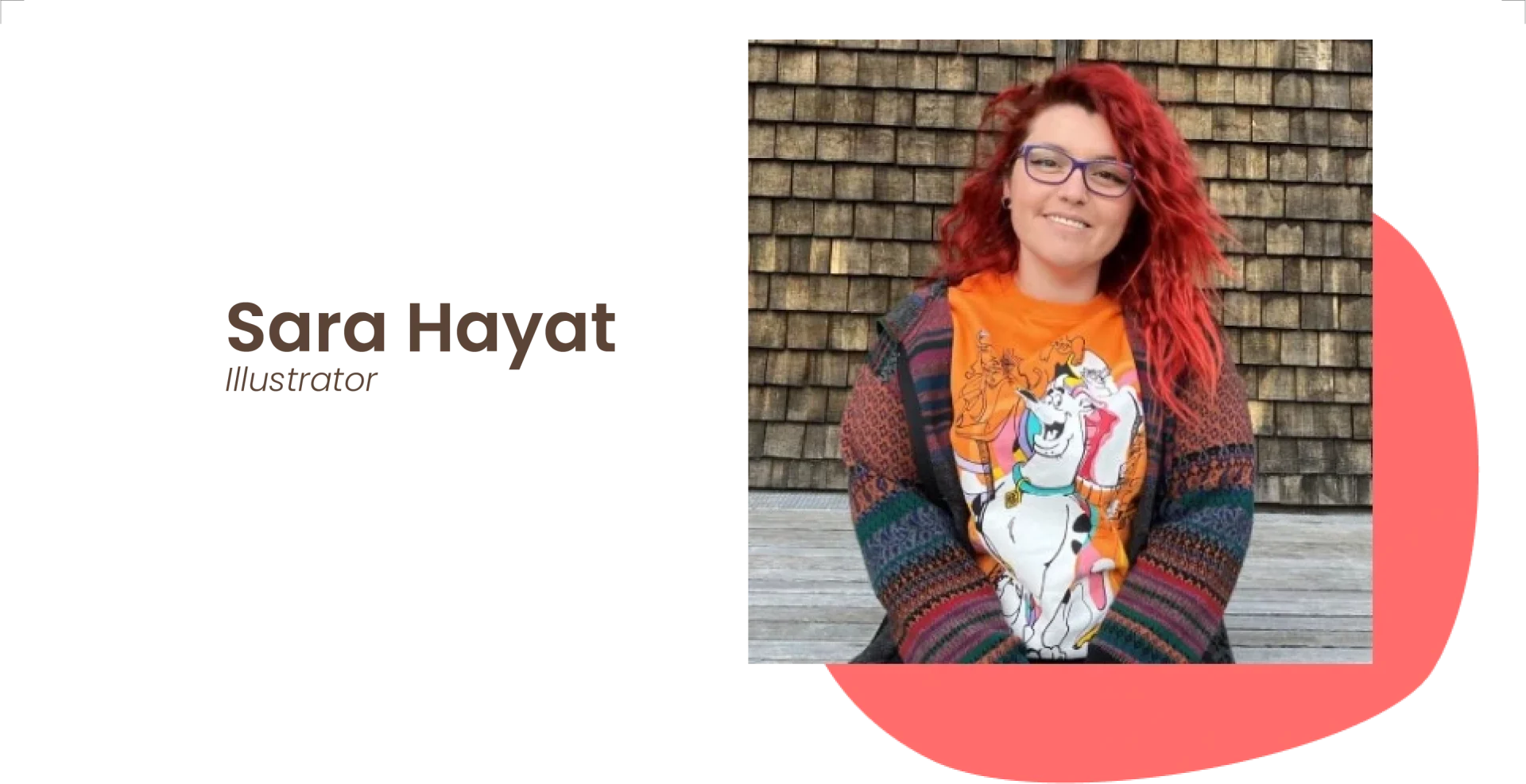The Syrian Humming project is a global collaboration between scholars and displaced Syrian artists: this project taps into personal and collective memories of food and everyday life, weaving together music, storytelling, and visual art.
A new project, Jannah, Jannah (Paradise, Paradise), continues along this path, intertwining the voices and experiences of displaced Syrian communities in Istanbul with a shared artistic vision.
Sara Hayat, Sweden-based Syrian illustrator, spoke with ‘Qisetna’ about this project.
What is Jannah, Jannah?
Jannah, Jannah about Syrians’ dream of creating a peaceful, safe place here on earth.
It’s not about the religious idea of heaven but more about what “paradise” would feel like if they could rebuild their communities.
It also taps into the spirit of the Syrian revolution, where even in the worst conditions, people held onto hope that their homeland, despite everything, could still feel like heaven.
Were there any moments in the project when the work took a different direction?
The collaboration with Mohammad and Adib [ILLADIB] definitely added new layers to the artwork. Their personal stories and perspectives brought in emotions and experiences I hadn’t originally considered, which made the art feel more real and connected to our experiences.One moment that shifted the project’s direction was when we discussed the idea of Jannah not as an ideal paradise, but as something broken yet cherished—like how people view their homeland, even after everything that’s happened. This idea pushed the artwork to focus more on the duality of pain and hope, and it led to the use of symbols like broken vases.
For you, what is Jannah?
For me, Jannah means a place where you feel safe, free, and at peace. It’s not necessarily a perfect place, but where you feel a sense of belonging and happiness with the people or environment around you. It’s those moments in life where things just feel right, even if it’s brief.
As I know, the pleasure and delights of Jannah are matched by the pain and horror of Jahannam.
What would you call Jahannam?
Jahannam is the opposite—suffering, fear, or feeling lost.
It could be a literal war zone or a feeling of being disconnected from your sense of self or home.
In the context of the chant [Jannah Jannah], even though Syria has been through hell, the deep connection to the homeland makes even the suffering feel like something worth holding onto.

What is art for you?
Art, for me, is both a language and a tool for self-expression—a visceral way to connect the internal with the external. It’s a way to channel emotions, thoughts, and personal experiences into a universal dialogue that transcends barriers like language, culture, and geography.
Art communicates what words often can’t.
I think of art as activism, too, especially in turbulent times or places where voices are silenced. When you come from a background shaped by conflict, displacement, or cultural richness, art naturally becomes a form of resistance, a space where you can advocate for change, explore identity, and preserve history.
Do you draw inspiration from Syrian forms of art, artists and styles?
The colour palettes, textures, and even abstract forms in Syrian art are deeply tied to the land, culture, and politics of the region. These influences often come through in my use of shapes, symbolism, and the emotional intensity of my work.
In a broader sense, I also draw from global contemporary art movements, but the roots are always tied to my cultural background.
The art becomes a dialogue between where I’m from and where I am now.
How would you define yourself in one phrase?
If I had to describe myself in one sentence, I’d say “a storyteller through art”.
Is it somehow different from the words you could have used, say, 10 years ago?
Ten years ago, I might have just called myself “an artist” or “a creator,” but now I feel like my art is about sharing deeper, more personal and collective stories—stories that matter.
What’s shaped me the most are memories of home, and being part of the social changes we are going through as a Syrian woman.
One of the most powerful things I’ve done is documenting the stories of women who were in detention. Hearing their voices and making sure their memories are kept alive changed how I see the world, and that shows up in my art.
Growing up in Syria and living through war left a deep mark on me. These experiences aren’t just personal; they’re part of a bigger history that many people only saw from a distance. But for me, they’re real and lived, and they continue to influence my work and who I am today.
Rina Repina




1 comment
[…] | Composer & producer Sara Hayat | Illustrator Mohammad Orwani | Podcast designer & […]